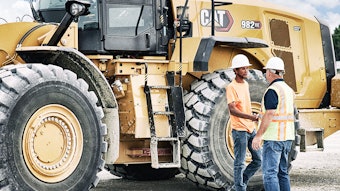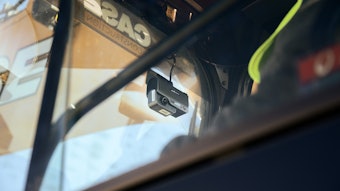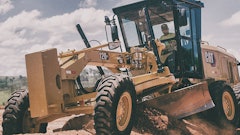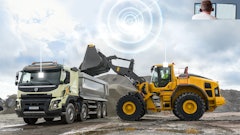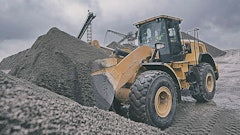
COVID-19 made remote work and telecommuting a reality for millions of people across industries. But construction’s one of those fields that requires workers to be on-site, right? Maybe for certain jobs — but not necessarily for one of the hardest-to-fill positions: equipment operator.
With remote-control technology gaining traction, perhaps the end to the operator shortage problem is finally in sight. It’s too soon to know for certain, but here are four ways remote operation is sure to help your recruiting (and retaining) efforts.
1. Expand Your Pool Of Potential Workers
Running a remote-control system like the Cat Universal Remote Operator Station or Command Station involves sitting in a comfortable seat, looking at a multi-screen video feed, manipulating objects and materials using virtual controls and receiving online feedback. No wonder many operators equate the experience to that of playing a video game. Guess what? There’s an entire generation of potential operating talent that’s already spent years functioning within that environment. It’s just a short leap from video games to the immersive experience of a fully equipped remote operator station.
2. Reduce (Or Eliminate) The Commute
Gas prices are rising. Construction sites aren’t always conveniently located. And regardless of location, the job’s going to move somewhere else when the project is done. All that can be a deterrent to some workers. With remote operation, the work site can be wherever you want it to be. (Literally — we’ve witnessed operators in the U.S. run machines in Europe and Asia with no detectable control lag.) That means you can set up a command center in a populous or popular location — where workers are or where they want to be. You could even place an operator station in an employee’s home, eliminating the commute altogether.
3. Offer A Safer, More Enjoyable On-The-Job Experience
There’s no need for a hard hat, safety glasses, ear protection or even a coat when working from a universal remote operator station. There’s no suffering through oppressive heat or extreme cold. There’s no jarring motion, vibration or dust. And there’s no climbing on and off large pieces of equipment, which is where the vast majority of lost-time injuries occur. Caterpillar’s remote-control technology provides a means for employees recovering from injury to get back to work sooner. Additionally, it offers an opportunity for individuals with disabilities to operate equipment. Remote operators essentially work in an office environment that’s safe, warm, quiet and well-lit, with restrooms and other amenities close by. At the end of a shift, they go home clean, with little fatigue, ready to spend quality time away from work.
4. Keep Experienced Operators Working Longer
Years of working in heavy equipment can lead to injuries or wear down an operator’s body. Instead of watching your most skilled workers take another job or early retirement, what if you could keep them behind the controls? The advantages of remote operation (see #2 and #3) can help you retain existing operators — reducing turnover, minimizing training costs and allowing your company to leverage their invaluable experience.
Curious to learn more about the benefits of remote control — not just for your operators but for your overall business? Check out this free webinar. It walks you through the basics of the technology: options, applications and answers to common questions.





